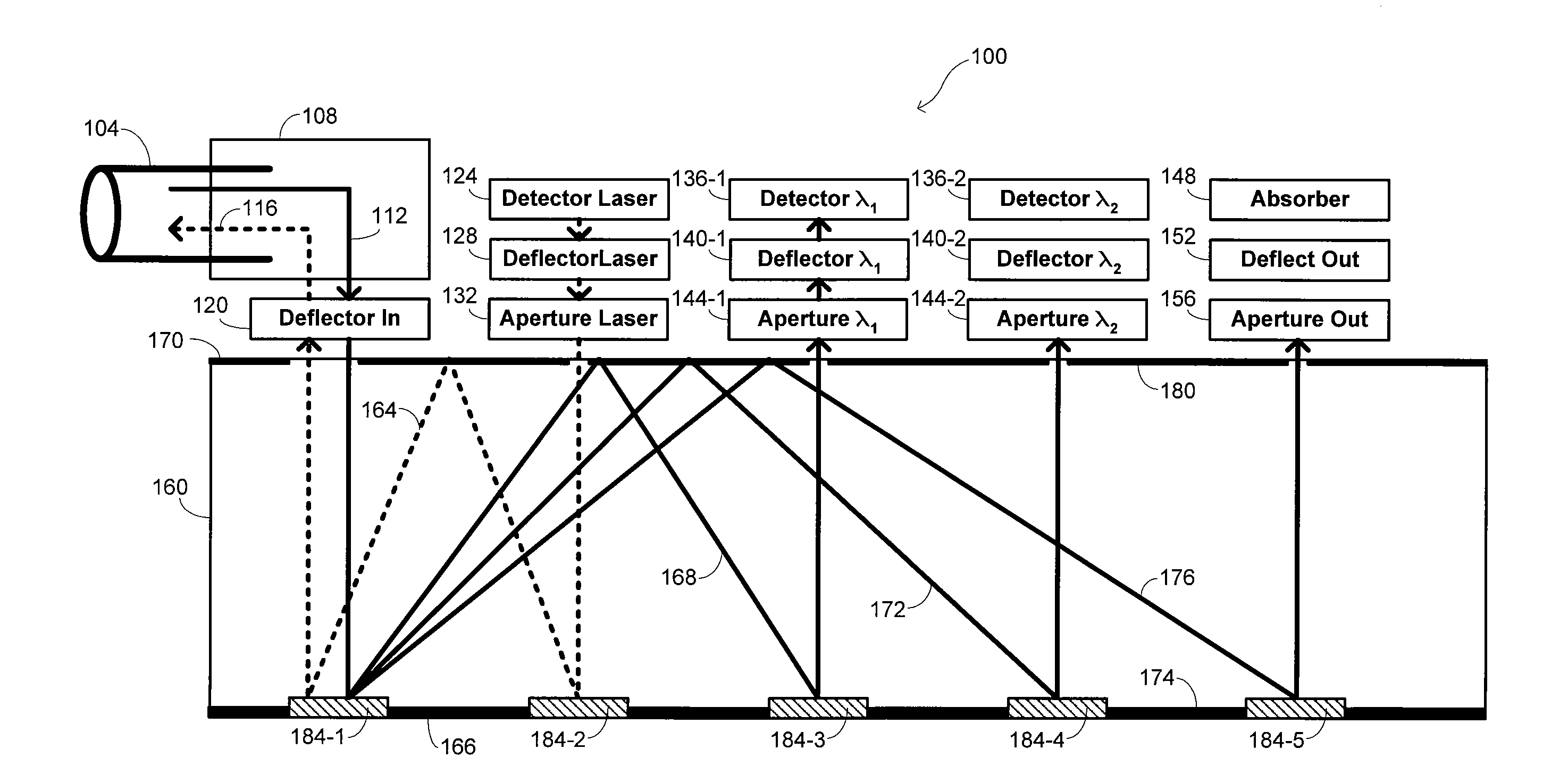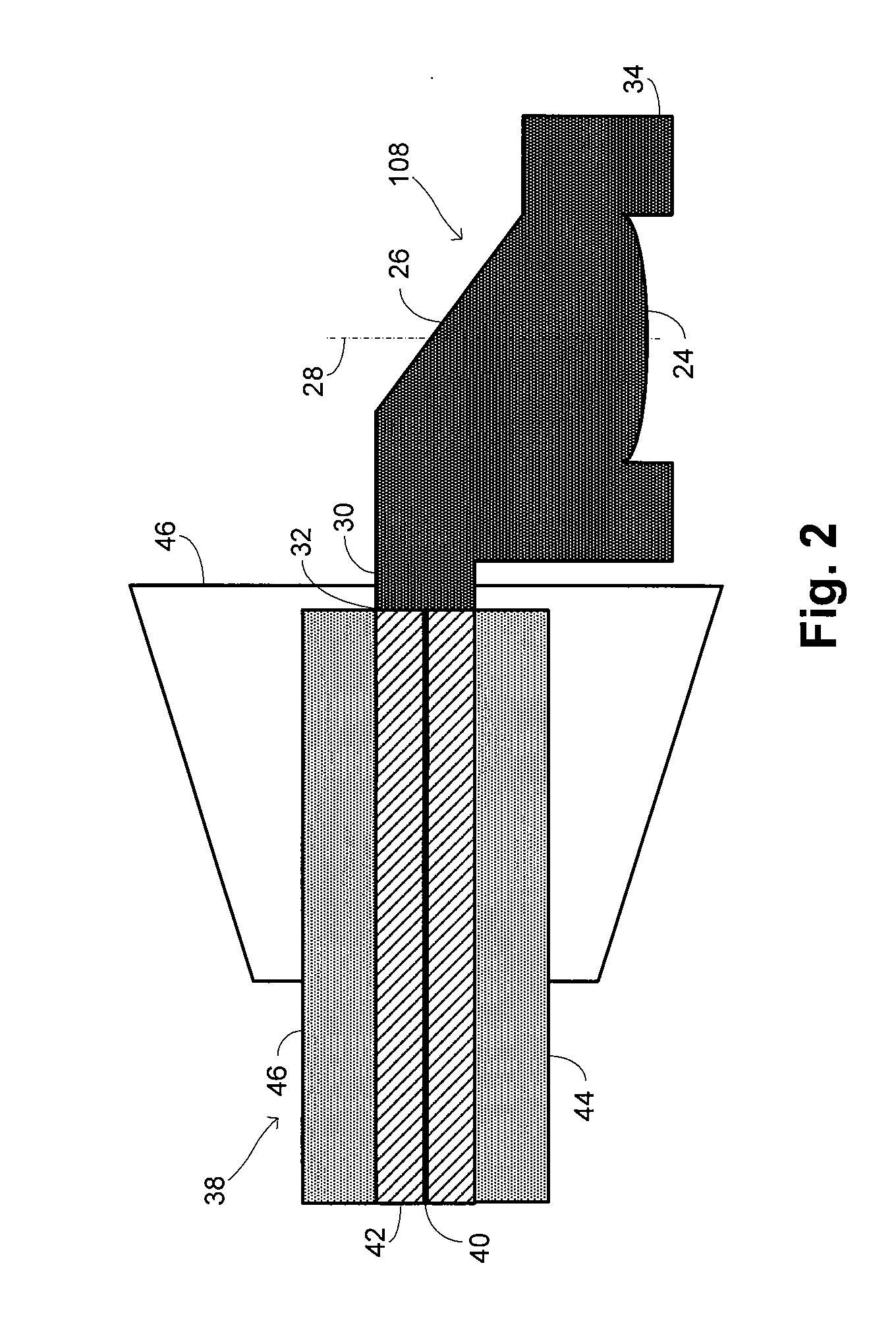Optical assemblies and methods for fabrication of optical assemblies
a technology of optical assemblies and optical components, applied in the field of optical routing, can solve the problems of stray radiation absorption, cost of fabrication, and the need to control the absorption of stray radiation, and achieve the effects of high precision, effective management of wavelength isolation and stray radiation, and efficient multiplexing and demultiplexing operations
- Summary
- Abstract
- Description
- Claims
- Application Information
AI Technical Summary
Benefits of technology
Problems solved by technology
Method used
Image
Examples
Embodiment Construction
[0021]Embodiments of the invention provide optical assemblies that may be used in directing radiation. Such optical assemblies find particular application in applications in which the radiation is directed through a PON, although they may be amenable to uses in other applications also. Rather than adopt a conventional approach to providing such an optical assembly, the inventors have applied their experience with semiconductor-processing techniques to develop a structure that uses a semiconductor substrate to provide a quasi-free-space optical platform. Structural elements of an optical subassembly are fabricated using semiconductor lithographic techniques, providing a structure that may be produced at a cost significantly lower than structures produced using more conventional techniques.
[0022]In certain embodiments, the fabrication techniques advantageously exploit the availability of pick-and-place methods for accurate fabrication of structures. The use of semiconductor-processing...
PUM
 Login to View More
Login to View More Abstract
Description
Claims
Application Information
 Login to View More
Login to View More - R&D
- Intellectual Property
- Life Sciences
- Materials
- Tech Scout
- Unparalleled Data Quality
- Higher Quality Content
- 60% Fewer Hallucinations
Browse by: Latest US Patents, China's latest patents, Technical Efficacy Thesaurus, Application Domain, Technology Topic, Popular Technical Reports.
© 2025 PatSnap. All rights reserved.Legal|Privacy policy|Modern Slavery Act Transparency Statement|Sitemap|About US| Contact US: help@patsnap.com



